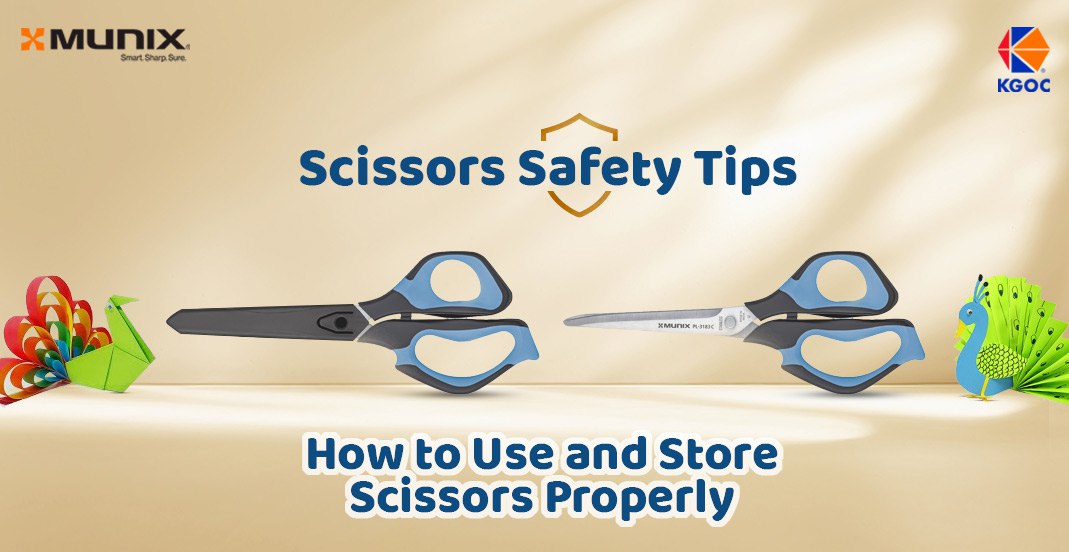July, 2024
Scissors are a versatile and indispensable tool in every household, but they also come with risks if not used and stored correctly. Here are some essential safety tips to ensure you handle scissors safely and keep them in good condition:
Using Scissors Safely
-
Choose the Right Scissors for the Task
- Different tasks require different types of scissors. Ensure you’re using the appropriate pair for the job to avoid accidents and achieve the best results.
-
Keep Scissors Sharp
- Dull scissors are more likely to slip and cause injuries. Regularly sharpen your scissors to maintain their cutting efficiency and safety.
-
Hold Scissors Correctly
- Always hold scissors by the handle and keep your fingers away from the blades. Use a firm grip to control the cutting motion and prevent slips.
-
Cut Away from Your Body
- Always direct the blades away from your body and keep your non-cutting hand clear of the cutting line to avoid accidental cuts.
-
Don’t Run with Scissors
- This common safety rule is crucial. Always walk when carrying scissors and hold them with the blades closed and pointed downwards.
-
Use Scissors in Well-Lit Areas
- Good lighting ensures you can see what you’re cutting, reducing the risk of mistakes and injuries.
Storing Scissors Properly
-
Keep Scissors in a Designated Place
- Store scissors in a specific spot, such as a drawer or a container, to keep them organized and easily accessible.
-
Use Blade Covers
- When not in use, cover the blades with a protective sheath or cap to prevent accidental cuts and keep the blades from becoming dull.
-
Store Scissors Out of Reach of Children
- Keep scissors in a secure place where young children cannot access them. Consider using child-proof locks on drawers or containers if necessary.
-
Regularly Inspect Your Scissors
- Check your scissors periodically for signs of wear, such as loose screws or damaged blades. Replace or repair them as needed to maintain safety and functionality.
-
Label Your Scissors
- If you have multiple pairs of scissors for different tasks (e.g., kitchen, crafts, first aid), label them accordingly to ensure they are used correctly and maintained properly.
By following these safety tips, you can prevent accidents and keep your scissors in top condition for all your cutting needs. Whether you’re using them for crafting, cooking, or everyday tasks, proper use and storage of scissors are essential for safety and efficiency.
